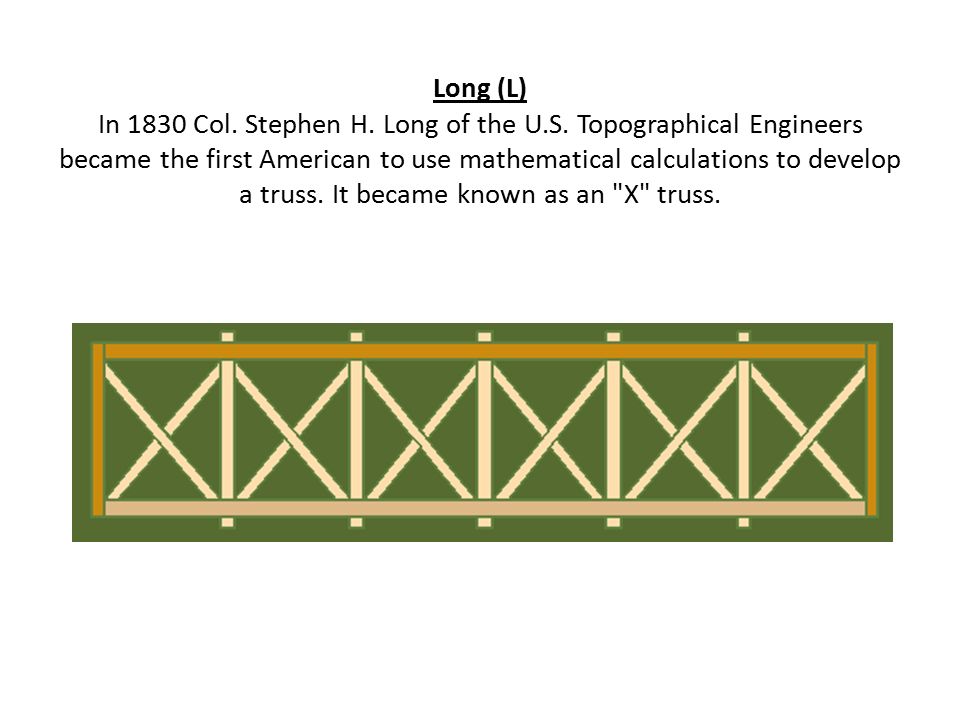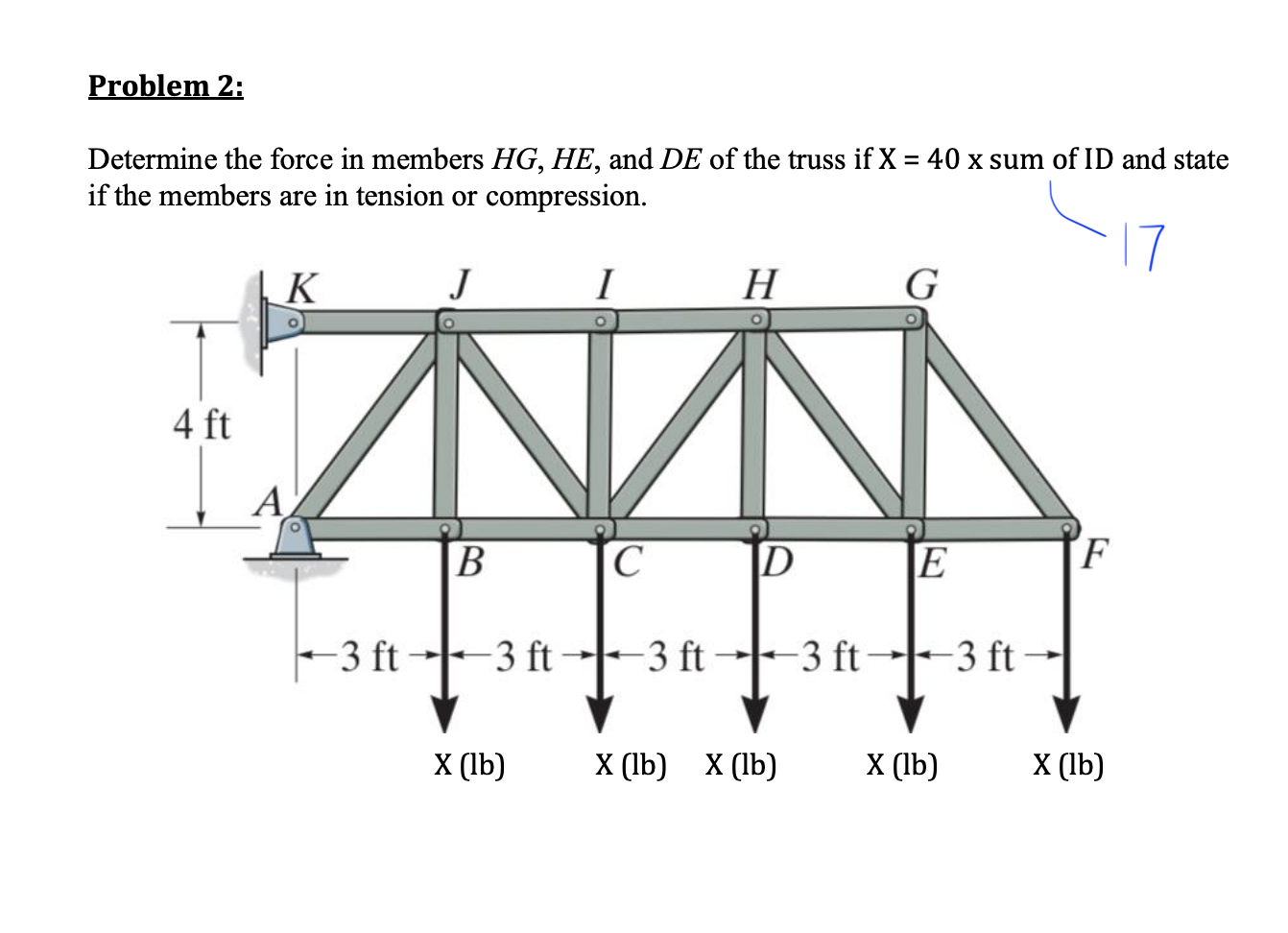While design of truss one supoort assumed as a pinned and other roller same shall. At the turn of the twentieth century the B.

Railroad Truss Bridge A J Russell American 1830 1902 Virginia United States July 1863 Salted Paper Print 14 4 20 Cm 5 11 16 7 7 8 In Reimagined By Gibon Design Of
Following load combinations are considered for design of trusses 1 dl ll 2 dl wl x 075 nodal load on wind ward leeward side as per is 800.

. Railroad Bridge replaces the stone Patterson Viaduct which was built in 1830 and destroyed by the flood of 1868. Russell American 1830 - 1902 151 203 cm 5 1516 8 in 84XO137037. In a uniformly loaded simply supported truss the maximum deflec-tion will always occur at mid-span eg 23-9-11 or 23-97.
Longs truss system consisted of rectangular panels each with two diagonals crossing to form an X. In 1820 represented the first truly American development2 The Long truss patented in 1830 and 1839 by Colonel Long was the first to incorporate panel counter-bracing systematically. Longs truss exposed in the image below never received as much acclaim as the trusses of Howe discussed in the next paragraph or Town.
1 In 1830 Stephen Harriman Long received a patent for an all-wood parallel chord truss bridge. In the next years he turned his attention to bridges and invented two new truss designs employing. Long became the frist American to use mathematical calculations to develop a truss in 1830.
1984 clause 392 for design of truss member the sresses are increased by 33 when wind is considered. The wire rigging that trussed the Chanute and Wright aircraft was sloped in both directions and formed X-shapes in the spaces or bays between the struts. Brevet-Colonel Longs first bridge patent was issued in 1830.
This gives the Howe truss a level of redundancy which allows it to withstand excessive loading such as the loss of a panel due to collison. In that position he promoted the adaptation of wooden bridges to railroad use and formulated a series of tables for determining curves and grades. Corps of Engineers patented a wood truss with a simpler.
Py In 1830 Colonel Long of the US. Open Content images tend to be large in file-size. The bridge carpenter Leonard Knowlton used a patented Long-truss design which used mathematical calculations to develop a truss that looks like the letter X.
Order this image Truss Experiment Loading Bridge No. Long 1784-1864 of the US. This shelf also boasts the patented.
The bridge was built in 1830 by John Shriner Jr. The foundation and approach to the bridge were constructed by Isaac Wharff who hauled the granite more than 7 miles by oxen team from Guilford Mountain. The wooden truss was also known as the Long truss and he is cited as the first American to use mathematical calculations in truss design.
Long truss Designed by Stephen H. In 1840 he invented a lock for weighing canal boats. Long received the first of many patents for bridge trusses in 1830.
Highest Resolution Size 5437 x 4697 px 2403 MB This image is available for download without charge under the Gettys Open Content Program. Each shelf can hold up to 800 lb with a 2400 lb. Improved on the 1830 Long truss by replacing the vertical posts with adjustable wrought-iron rods to overcome the inherent difficulty of creating tension connections in wood structures and allowing for easier and more efficient pre-stressing of the members.
Army Topographical Engineers may be best known for comments he made after one of his missions to explore and map the United States as it expanded westward. Originally a metal Bollman Truss bridge was built on the surviving abutments. Long story short the Bridge Company hired Johnson who designed a unique modification of the established two-span Burr Arch-truss bridge.
A truss in the form of a K due to the orientation of the vertical member and two oblique members in each panel. The design resembles a Howe truss but is entirely made of wood instead of a combination of wood and metal. While working for the Baltimore and Ohio Railroad he developed the X truss in 1830 with further improvements patented in 1835 and 1837.
It was used mostly in covered wooden bridges. Massachusetts millwright William Howes contribution patented in 1840 was a truss design that used timbers for upper and lower chords and diagonal. Railroad set about to remove problems from.
In 1840 Howe received a patent for his truss design. While working for the Baltimore and Ohio. It is made entirely of wood instead of a.
He was more interested in promoting his patents not building the bridges. And Zacheus Braley and used the Burr Truss design which was used for the first time in 180 in Waterford New York and patented by its designer Theodore. Maximum weight per each set of 4 posts.
While working for the Baltimore and Ohio Railroad he developed the X truss in 1830 with further improvements patented in 1835 and 1837. Since it is NSF-listed for dry storage applications this shelf is great in a bulk ingredient or supply area. In 1819-20 when he viewed the treeless expanse of the Great Plains he called it the American Desert - - and the name stuck.
The Truss Design Drawing for the truss shown in Figure 4 lists a calculated Live Load deflection of 0301 or l1830 which is con-siderably less than the code allowed maximum of 2296. Since it is NSF-listed for dry and wet storage applications this shelf is great in a bulk ingredient or supply area. Johnson was an engineering genius As in 1927 the so-called Freshet of 1830 a great flood wiped out the Johnson bridge and most of the businesses along the river.
Web members connect the upper and lower lines or beams. It would seem to echo an earlier design the Long truss developed by Stephen H. NSF zinc 18 x 30 wire shelf is an excellent choice for your storage needs.
But unlike modern trusses the diagonals or web systems were of wood lattice construction and chords were composed of two or more timber planks. This Eagle Group 1830S NSF stainless steel 18 x 30 wire shelf is an excellent choice for your storage needs. This Eagle Group 1830Z Eaglebrite.
In 1830 after graduating from Union College Schenectady NY Whipple conducted surveys for several railroad and canal projects and made surveying instruments. The wooden truss was also known as the Long truss and he is cited as the first American to. His truss design was a series of wood in an X shaped pattern.

Truss Types Objective Swbat Learn How To Plan Design Calculate And Construct A Model Of A Bridge Find Out How Mathematical Concepts Of Ratio Proportion Ppt Video Online Download

Solved Problem 2 Determine The Force In Members Hg He Chegg Com


0 comments
Post a Comment